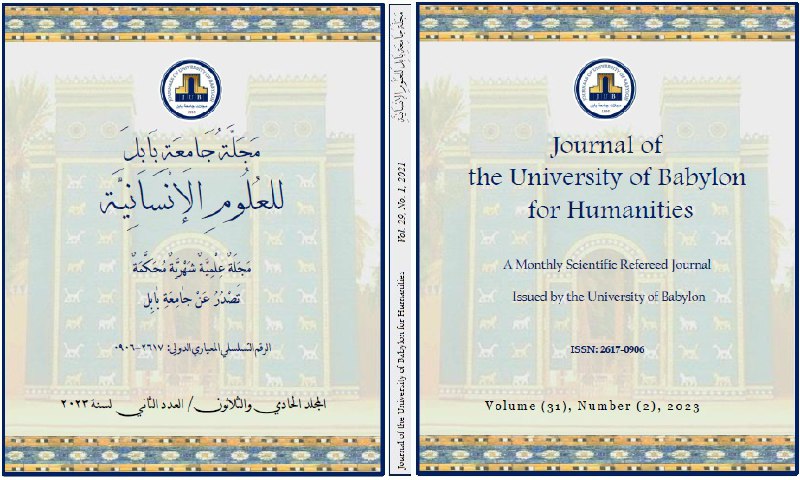The Semiology of Phonetic Ambiguity in the Performance of the Contemporary Iraqi Theatrical Actor
Main Article Content
Abstract
Theater is an aesthetic fountain and an intellectual incubator that inspires culture and exports it to elevate societies because of the sciences, values and creativity it possesses that contribute to removing ambiguity, gouache and misleading the recipient with aesthetic broadcasts adopted by the performer in international, Arab and Iraqi theater performances.
The first chapter of the research included a problem centered on the following question: (What is the semiology of vocal ambiguity in the performance of the contemporary Iraqi theatrical actor). From words and dialogues in the theatrical performance, the goal was determined by focusing on identifying (the semiology of phonetic ambiguity in the performance of the contemporary Iraqi theater actor), with defining the limits (temporal: 2012-2021) and (spatial: Iraq / Baghdad) and the limits (subject: a study of semiology Vocal ambiguity in the performance of the contemporary Iraqi theater actor) as well as the procedural definitions of the concepts mentioned in the research title.The theoretical framework consisted of two sections, the first: the semiology of phonetic ambiguity, the concept and the term, and it came with three axes: ambiguity in contemporary aesthetic thought and ambiguity, reading the psychology and characteristics of the mysterious personality. As for the second topic: it dealt with the semiology of vocal ambiguity in the performance of the theatrical actor in the global theater (modernity) and (post-modernism) and the Arab theater. The theoretical framework indicators were identified, and the researcher did not find a previous study related to the title of the current research. The third chapter included the research procedures, and the research community, which consisted of (ten) was identified.
Theatrical performances, and the research sample was extracted from it according to the intentional method. It was represented by a play exhibition (Smell of War), in which the researcher relied on the descriptive (analytical) approach in analyzing the sample according to the nature of the current research. In the fourth chapter, the results and conclusions were nominated, and finally the list of sources was determined.

